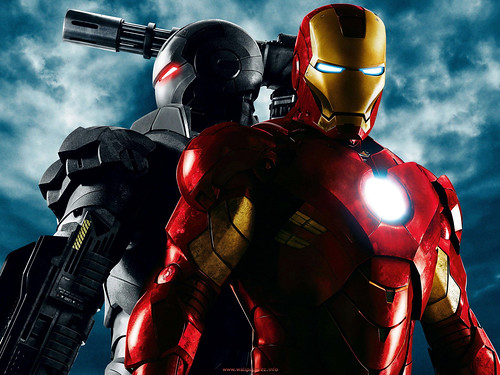
Superheroes crowded this year’s movie line-up: Batman: The Dark Knight Returns, Iron Man 3, Star Trek: Into Darkness, followed by Man of Steel and Thor 2: The Dark World… Behind the exciting action and science fiction, have you ever wondered about the scientists supporting the science of these pop culture icons?
Movie makers may consult an expert to check that their movie scenes are actually realistic. We may be looking for fantasy and incredible action in superhero movies, but if the scene is far too off from reality, many are likely to be turned off with a “What? No way…” Here are some questions a science adviser for the movie might ask: if there were to be an explosion, what would that scene look like? What engineering would be needed to fly that huge aircraft carrier, and how would it fly? If the movie is set in tropical waters, what sort of life should be present?
Last year, attending the annual meeting held by the American Association for the Advancement of Science (AAAS, publisher of the journal Science), I had the opportunity to hear from three scientists who investigated real-life physics, engineering, and biology in superhero movies.

Dr. Lawrence Krauss, professor of physics at Arizona State University and author of The Physics of Star Trek, pointed out some incorrect and correct science in Star Trek in his speech. For example, in an explosion outside of a space ship, no one should actually hear you scream, since no sound waves can travel in empty space. Also, the explosion spark and sound would not come simultaneously – light travels faster. On the other hand, Hollywood got it right when blood floated in spherical droplets; that is what happens to liquid in a zero gravity environment. We might find a “silent” explosion in Sci-Fi movies boring and thus the big explosions, but it is exciting to know the science in Star Trek is not all made up, and you would see some of the movie phenomena if you had gone to space.
Those who consider Batman and Iron Man your hero, take a read through Dr. E. Paul Zehr’s books Becoming Batman: The Possibility of a Superhero and Inventing Iron Man: The Possibility of a Human Machine. Unlike heroes who are born with a supernatural ability, Batman trains physically and intellectually to perfect himself, and Iron Man is a genius inventor of all-powerful suits. Although the original comic is vague on how Batman and Iron Man actually came to be, Dr. Zehr goes into depth about the intensive training and anatomical responses to stress that would have happened for Batman to achieve his physical strength, and what neurological functions would be required to make possible Iron Man’s fusion of suit technology and brain signaling. Professor Zehr chooses Batman and Iron Man to explore the real science of human body functions.
Last but not least, Professor of Physics James Kakalios at the University of Minnesota wrote a book on The Physics of Superheroes. He used his love for comics as a tool to teach his students physics. My favorite example was Gormuu – an alien that appears in the Fantastic Four. Trying to attack Gormuu with weapons only made him grow larger, but our hero Reed Richards finds that his footsteps make too shallow of an imprint for a creature that has grown so large. In fact, Gormuu was growing in size but not in mass, so he was a like a balloon that when blown up too much would explode. (It is possible to calculate how deep his footsteps would have been if his mass increased in proportion to his size!) Dr. Kakalios was the advisor for the newest Spiderman film, creating a fictional equation for regrowth in the movie, modifying an existing equation. There is a new wave of Sci Fi, he says, “[Sci Fi] could teach Physics, Chemistry, and Neuroscience.”

Superhero movies will stretch the extremes of science – how could Iron Man’s small jet boots keep a full grown man in the air for so long? How could thirteen people be shot out of an airplane and survive a huge fall into the ocean unscathed? (See Popular Mechanics “The Science of Iron Man 3’s Free Fall”) Still, as science advisor for Thor Sean Carroll says, “people get images of what science is from movies.” The movie may only be a hook to get people familiar with some scientific concepts, but that is the link to question science in the real-world. Thanks to so many scientific advisors, and an institutionalized “Science & Entertainment Exchange” by the National Academy of Science that matches movie makers to the appropriate science experts, detailed attention is going to make the image right.
(This article was published in June 2013 on At this time the news magazine and Community of Accounting and Business Professionals blog)